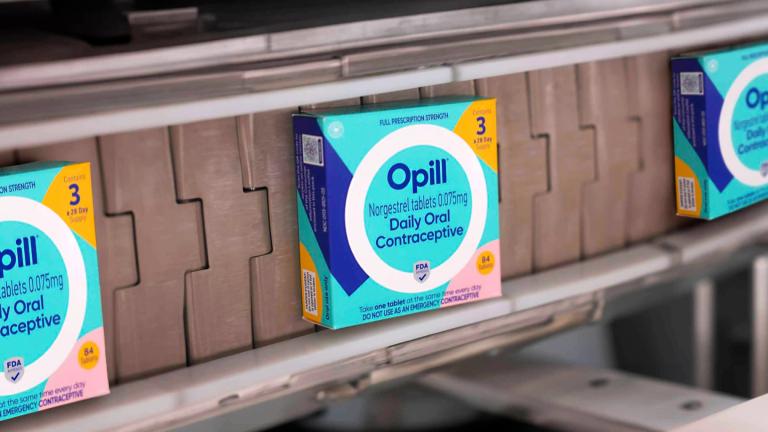When Julia Wallace entered the news business in 1978, she was among a flood of young women who decided to become journalists in the post-Watergate era.
Several landmark gender discrimination lawsuits in the 1970s forced newsrooms around the country to make room for women. But how have they fared – and what lessons can they offer the next generation?
Wallace, managing editor of the Chicago Sun-Times from 1992-1996, is the Frank Russell Chair in the Business of Journalism at Arizona State University’s Walter Cronkite School of Journalism and Mass Communication. She’s also the co-author of “There’s No Crying in Newsrooms: What Women Have Learned About What It Takes to Lead.”
Wallace says there has been very slow progress for women in journalism since she started her career.
“It’s not a particularly great story,” she said. “The reality is there’s been very slow progress and in last few years actually some regression. In the early 2000s, when Ann Marie Lipinski was managing editor at the Chicago Tribune, she started something called the Large Ladies Group, made up of women managing editors at large-circulation papers. There are fewer women running large-circulation newspapers today than there were when she started the group. I think the industry became so consumed with financial challenges after the Great Recession that they put diversity on the back burner.”
Below, more from our Q&A with Wallace about women in journalism, the future of the industry and her new book.
You now teach courses on the future of news, new business models and innovative ways of thinking about journalism. The internet has disrupted the news business model, causing a massive decline in print journalism. Where is journalism headed?
I’m very positive about parts of it and concerned about others. We’re seeing some of the best national reporting that has ever existed, as well as niche reporting that didn’t exist in the old model. There are plenty of new, interesting things happening, including start-ups providing content that didn’t exist in the past. The problem is local news. Local newspapers are withering and dying.
Journalism jobs declined by 25% between 2008 and 2018. What advice do you give your journalism students about job prospects?
Our students have no trouble finding jobs, but the jobs might be different than what they envisioned. It might be tough for them to get a job as a beat reporter at a newspaper, but there are jobs in journalism. I graduated from Northwestern University in 1978. Afternoon newspapers were closing when I graduated. Chicago Daily News closed in 1978. So I faced a similar situation of not knowing what the future would hold in terms of job security. What I tell my students is you can’t expect to go one place and stay for 40 years.
What do you think about the new Facebook news service?
I think tech has not been a great ally in the past to news. So we’ll see. The media companies I’ve worked for have been talking to social media platforms for the last 20 years about being compensated. I haven’t met with Facebook personally, but my newspapers have. It’s a bit hollow to hear Facebook’s proposal now that they’ve captured so much of journalism’s revenue.
Can we trust tech companies with the news?
It’s clear is that big tech companies don’t have the same values as journalists. People get into journalism to pursue the truth and many view it as a public service. I don’t think you can say the same about the tech industry.
Do you have concerns about so-called fake news?
Without a doubt, the internet has contributed to the proliferation of fake news. It’s just easier for fake news to be disseminated because of social media.
Below, two excerpts from “There’s No Crying in Newsrooms.”
Ann Marie Lipinski hit on one solution when she was editor of the Chicago Tribune in the early 2000s. She had agreed to be interviewed by a Japanese woman who was doing research for a book, and as the interview was wrapping up the woman asked Lipinski, “Do you know of any other ‘large ladies’?”
Lipinski hesitated for a moment and then suggested Karen Jurgensen, the first female editor of USA Today. Lipinski had never actually met Jurgensen, but she figured that if she was a large lady so was the editor of the nation’s largest circulation daily.
Afterward, Lipinski couldn’t get the idea of “large ladies” out of her mind. The phrase tickled her so much she decided to make a call herself to Jurgensen. The two chatted for a while and then arranged to meet for dinner at the next gathering of the American Society of Newspaper Editors, where the top editors of U.S. newspapers gathered each year. ASNE was a sort of club for top dogs in journalism, and almost all the top dogs were men; Lipinski and Jurgensen thought it might be a relief to get away from the guys for a while.
“I’d been to lots and lots of editor meetings, but for the most part, the people there didn’t look like us,” Lipinski said. “It was kind of a comfort and calm being with her that night. It just felt really good to exchange perspectives and experiences. At the end of the night, we agreed we’d had a really nice time and it would be fun to continue and expand the group.”
And so the “Large Ladies” club was born. Each year, the women who led newspapers—in Portland (Oregon), Atlanta, Cleveland, San Diego, and a half dozen other cities—would schedule one night just for themselves.
Related stories:
Facebook Launches a News Section – and Will Pay Publishers
Evanston Native Shares How She Helped Break Harvey Weinstein Story
‘Remaking a Life’: New Book Features Chicago Women Living with HIV/AIDS
Sportswriter Chronicles Her Groundbreaking High School Basketball Team
Chicago Defender Ends 114-Year Print Run, Goes Online Only








